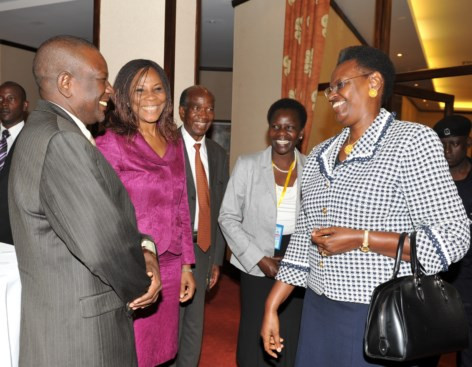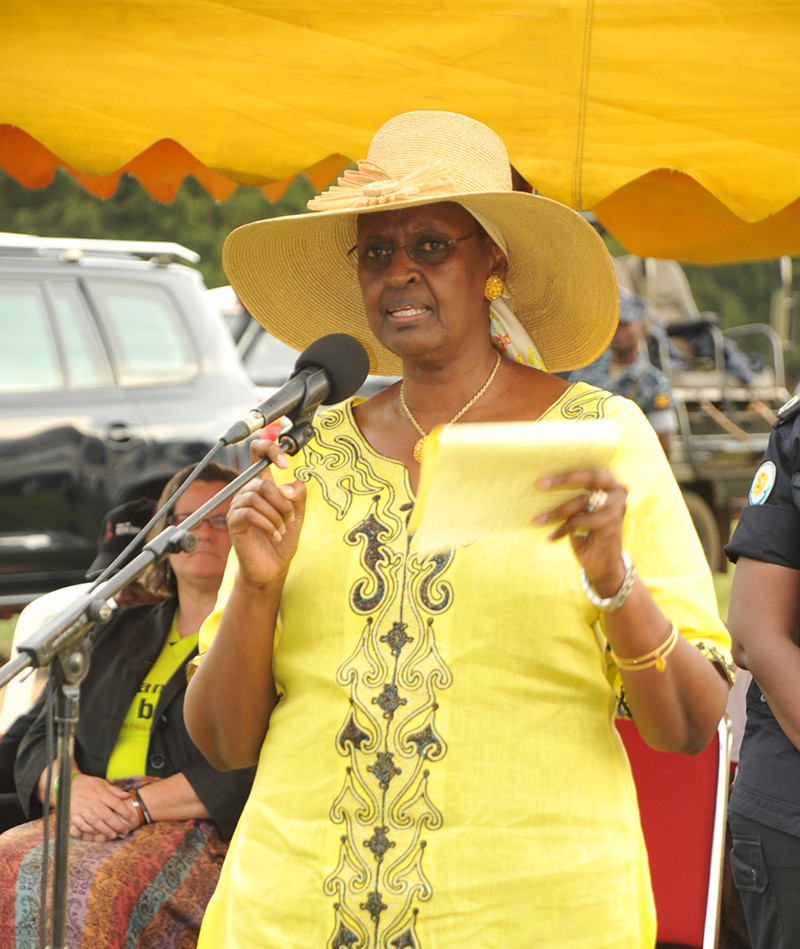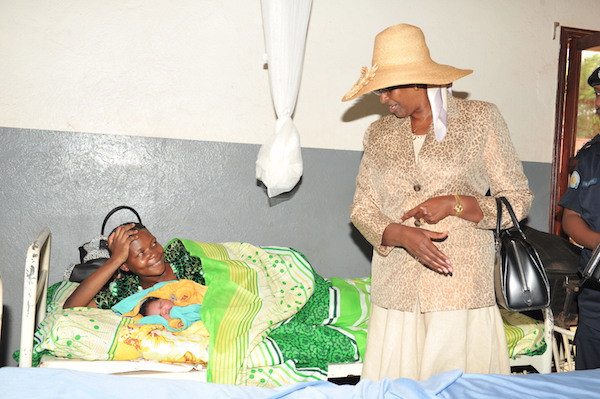The First Lady of Uganda organized a high level national EMTCT workshop that brought together about 200 stakeholders to discuss matters related to the prevention of mother to child transmission of HIV and AIDS. It took place on the 21st August, 2012 at the Serena hotel.
As chairperson of the sessions, she called upon participants to discuss and dialogue opened so that together we could forge the way forward in terms of achieving virtual elimination of this transmission and ensure healthy babies.
The objective of OAFLA is reinforcing policies and programs against HIV/AIDS through advocacy, resource mobilization and development of partnerships for accountability with all stakeholders at all levels. Within this framework, targeted campaigns on different thematic areas to address the various HIV/AIDS issues are conducted nationally in member countries. Since 2010, OAFLA’s focus has been ‘Prevention of Mother to Child Transmission of HIV (EMTCT).
In Uganda, the first lady has been successfully at the forefront of these campaigns since late 80s. She has been known for advancing the cause of ABC+ , that is Abstinence among youth, Be faithful among Married and Condom use among vulnerable group. Of recent, OALFA also advocates for medicine and against stigma and discrimination.
It is against this background that OAFLA Uganda, in partnership with UNAIDS and UNICEF, organized this high level EMTCT stakeholders’ workshop.
About Elimination of Mother to Child Transmission (EMTCT)
Globally most children get infected with HIV through mother to child transmission, this account for 10% of all new infections. MTCT is the second major route of HIV transmission and is virtually the only way children under five years of age acquire HIV. UNAIDS report (2010) states that, out of 370,000 children born with HIV, most of them, are in low- and middle-income countries mainly in sub-Saharan Africa. In Uganda, up to 30,000 out of the annual 130,000 new infections are a result of mother to child transmission; this has added a burden to the already overstretched health systems in the country and worsened the maternal, infant and child indicators that were already lagging behind the rest of the world. There is a national and global drive to stem new HIV infections, particularly through mother to child transmission of HIV (MTCT). Science has revealed that MTCT can be virtually eliminated if countries address the unmet need for family planning among women and men of reproductive age and early enrolment of expectant positive women together with their partners on antiretroviral drugs (ARVs).
Virtual elimination of MTCT has happened in the developed world and even some countries in Sub-Saharan Africa like Botswana which has registered success in eliminating mother to child transmission to 1%., Unfortunately in Uganda, this is taking a painful slow process because only 18,000 out of 70,000 HIV infected women in the country can access ARVs to prevent transmission to babies. The partners to these women in context are not even taken care of. The Uganda National EMTCT Program has registered success with uptake of about 50% as of June 2010 explaining why the country has a decline from 30% MTCT as of 2000 to 8% as of 2010. However with high HIV prevalence among women of reproductive age, it is estimated that 27,300 babies would be infected through their mothers by 2015 if we don’t have reinforcing policies and programs about EMTCT.
The above statistics raised a concern of the first lady, who decided to mobilize stakeholders for dialogue on the way forward. She believes that this state of affairs is not acceptable! It is a child’s right to be born HIV negative because it is now possible. She needed stakeholders to come together and share experiences and together work out practical solutions.
Goal of the workshop
- To facilitate dialogue among stakeholders about the situation of EMTCT in Uganda and how to make it more efficient in service delivery until there is virtual elimination of mother to child transmission of HIV/AIDS.
Objectives of the workshop
- Mobilize key stake holders in EMTCT to identify and strategize against bottlenecks in the successful delivery of EMTCT services together.
- Lobby policy makers and leaders in EMTCT interventions for successful delivery of integrated EMTCT services.
Target audience
The workshop targeted a national representation of EMTCT and potential EMTCT stake holders in government, civil society, development partners, private sector, religious, cultural and Opinion leaders.



